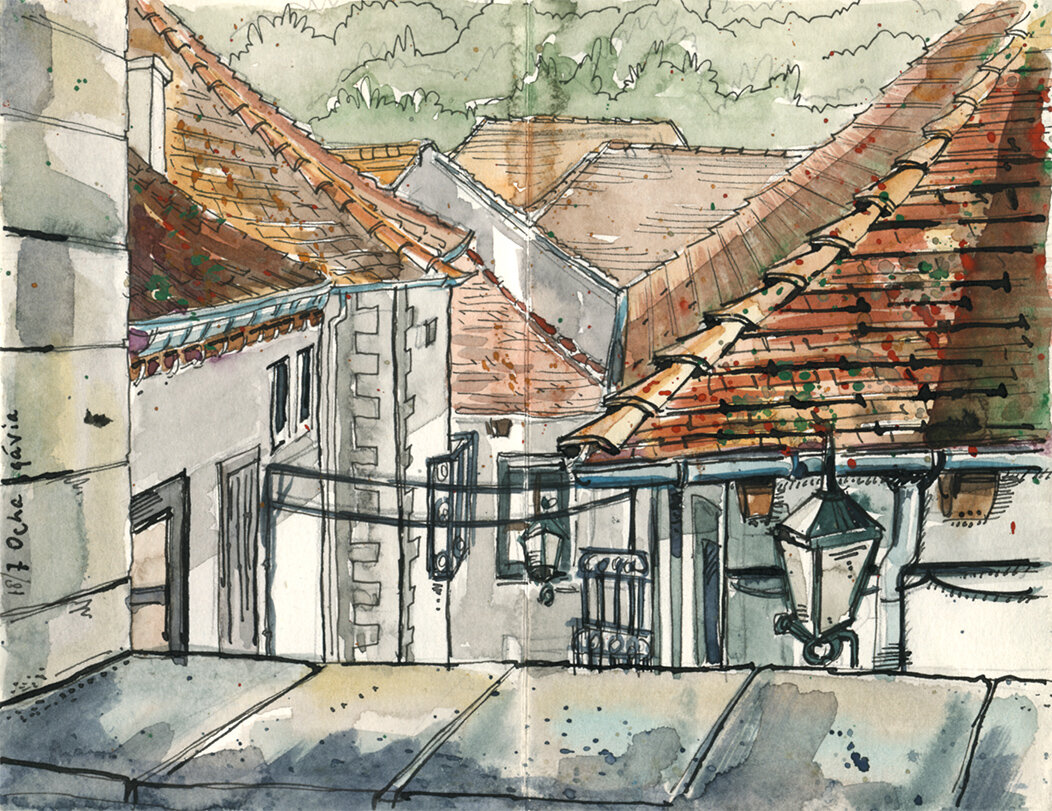“By the mid-twentieth century, Giménez Caballero’s jubilant dream for the Pirineos had materialised in unexpected forms. Scattered along the Spanish side of the Pyrenean border, from the Bay of Biscay to the Mediterranean and ranging to a depth of sixty kilometres from the frontier, approximately 4,500 fortifications, built on the top of hills and cliffs, stood guard over roads and valleys—the result of a vast project conceived early after the Civil War and secretly put into use as the collapse of the Axis armies approached in 1944”
— Santiago Gorostiza
28 July 2015/Old gate and house in Sallent de Gallego//Pen & ink, watercolour//
The difference between this Spanish part of the Pirineos versus the French part North from here is noticeable. Spain seems more austere and the houses and towns feel ‘Spanish’. That also applies to food. The main building material is a grey hard stone that must have been mined from all over the mountains. The huts, chapels and primitive shelters,equally so. Geert passed many pillboxes and bunkers, built by Franco’s troops here during and after the Spanish civil war. What is most striking about these, is that they face inwards. These weren’t used against invading hordes, but to keep their own people in! The Basques and Catalans suffered badly during the fascist years.
16 August 2015/The old brown door//Brushpen//
18 July 2015/Old bridge in Ochagavia//pen & ink, watercolour//
18 July 2015/Street scene, Ochagavia//pen & ink, watercolour//
28 July 2015/Street scene, Sallent de Gallego//Fineliner, watercolour//




